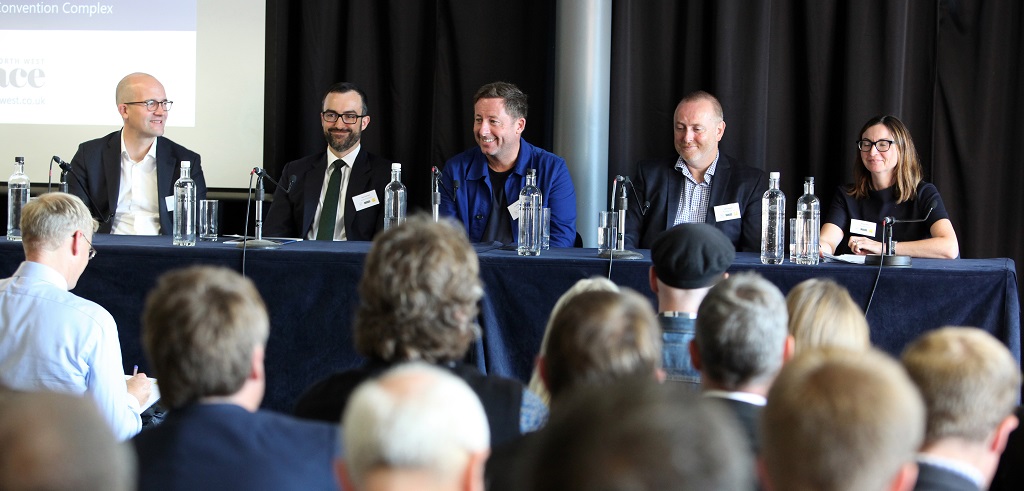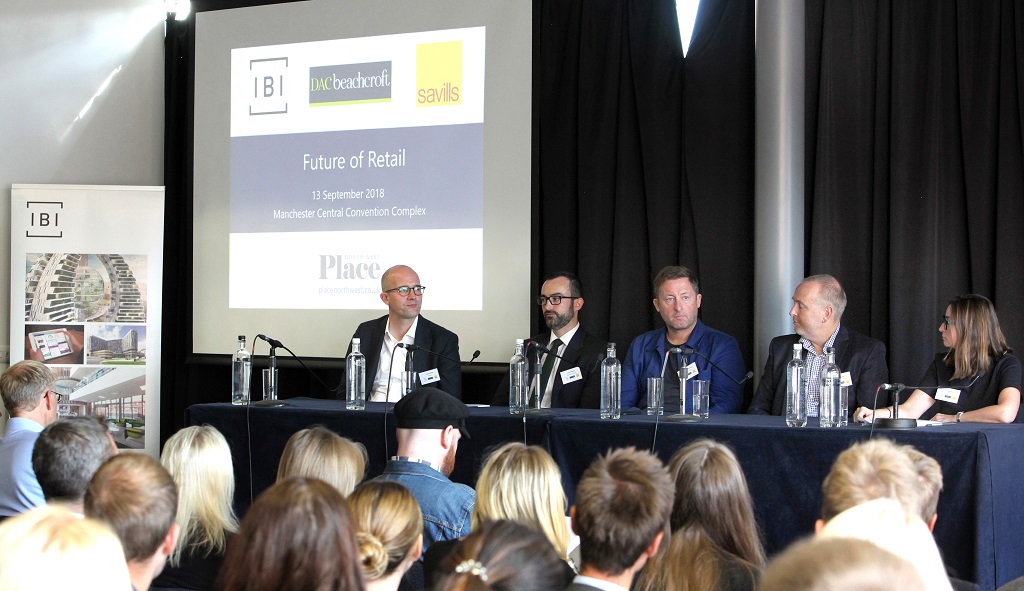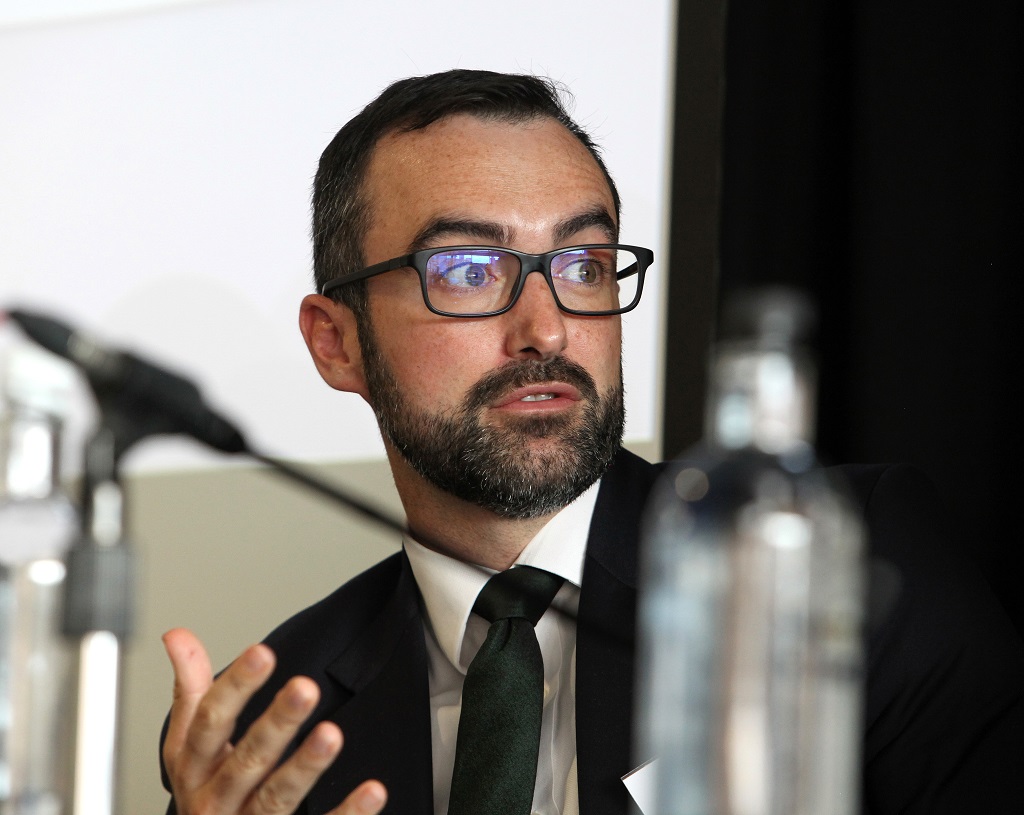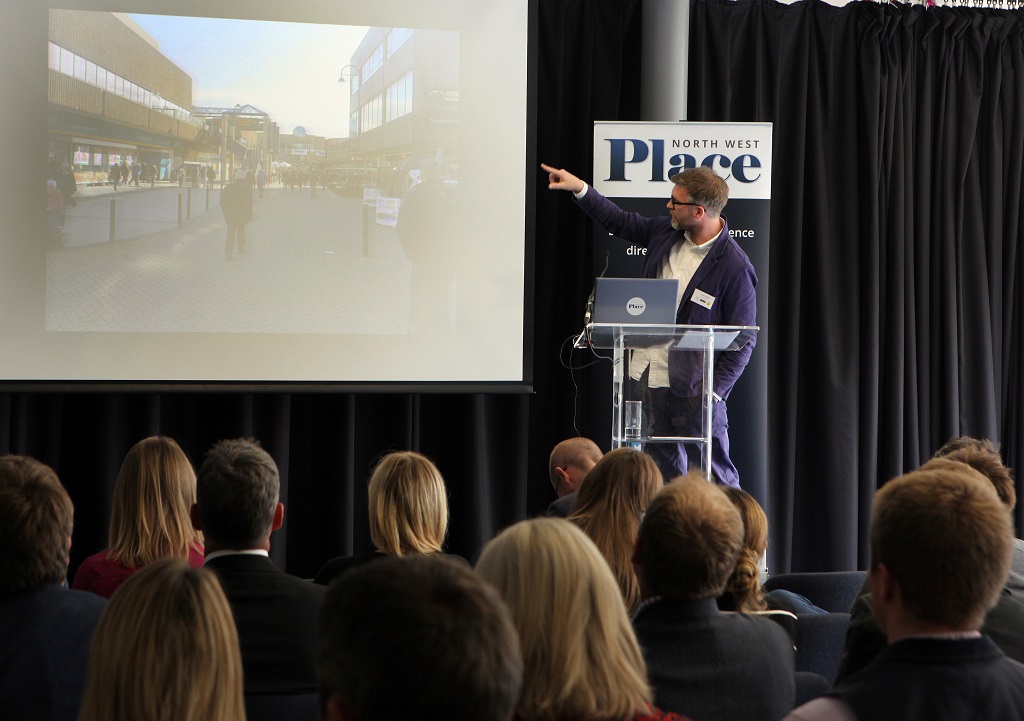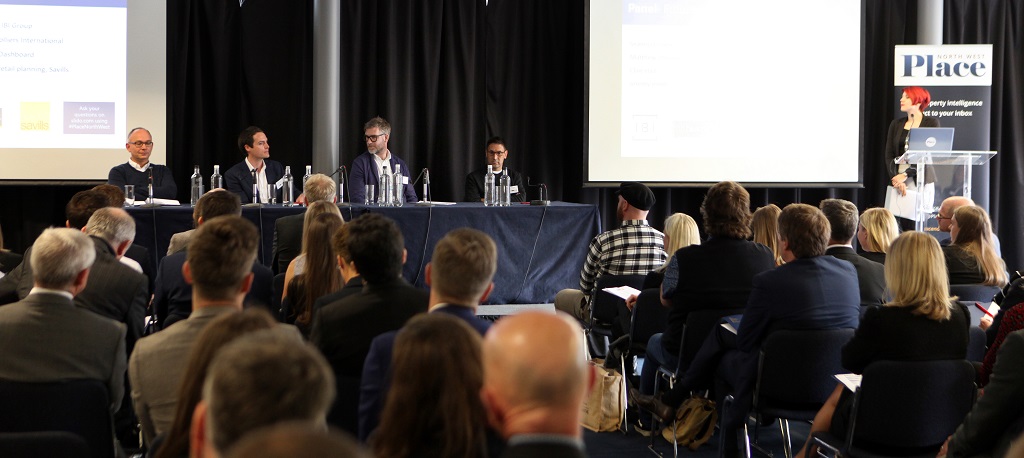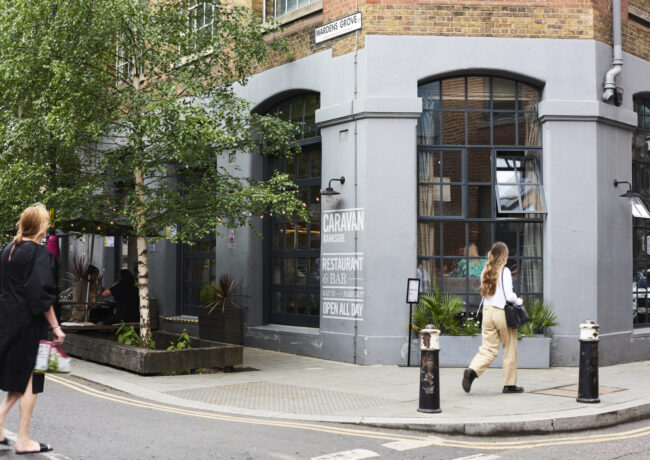Event Summary
Future of Retail | Summary, slides + gallery
With the retail sector undergoing the greatest shift seen in decades, Place North West was joined at the Future of Retail event by expert speakers to explore the current state of the market, occupier trends, and the technology set to define the future of shopping.
Scroll down to see slides + gallery
More than 150 people attended the half-day conference at the Manchester Central Convention Complex, which was sponsored by DAC Beachcroft, IBI Group and Savills.
Speakers included Daniel Mead, head of shopping centre asset management at APAM; Alison Key, head of real estate at DAC Beachcroft; Jeremy Hinds, head of retail planning, Savills; Jonathan Downey, co-founder of London Union; Tom Prescott, retail agent at Barker Proudlove; John Searle, director of economy for Rochdale Council; Matthew Thompson, head of retail strategy at Colliers International; Clive Hall, chief executive of PlaceDashboard; and Seamus Lennon, architect and studio director at IBI Group.
Key, DAC Beachcroft’s head of real estate, opened the event with a presentation about the evolution of the leisure experience from research completed by Savills:
- The future is promising, and it’s a story of growth, according to Key
- Leisure spend growth consistently outpaces retail. While household restaurant spend has levelled and cinema admissions have flatlined, revenue has increased
- 72% of leisure units are on high streets but density higher in schemes, 75% of leisure/F&B growth in last 5 years has been from change of use – not new development, growth in F&B has been well ahead of other sub-sectors, London high street units still ahead of the UK for leisure provision – but the gap is narrowing (36% compared to 22%), and the independent sector covering new ground
- The future isn’t equal, there’s a general feeling that CVAs need an overhaul
- Consumers are prepared to travel for specialist experiences, but they still want convenience and value
- The role of technology is important for customer experience and for retailers to have a dialogue with the consumer

From left: Daniel Mead, APAM, Tom Prescott, Barker Proudlove, Jonathan Downey, London Union, John Searle, Rochdale Council, Alison Key, DAC Beachcroft
Key was then joined by a panel of Mead, Searle, Downey and Prescott to discuss the current feel in the retail and leisure market.
The panel opened with a discussion of what makes good and bad retail, raising points about the negative impact of increasingly high rate bills, low footfall and lack of engagement with consumers all resulting in bad retail locations. Positively, shopping centres which put communities first, provide mixed-use spaces, and innovatively re-use vacated units, were seen as examples of good retail.
Market isn’t adapting to new tenants
- Questioned on whether the market was all doom and gloom, Prescott responded with a firm “no” and argued that retailers were still acquiring, and in towns that performed well were keen to upsize and manage estates positively. In locations that may have been “under-demolished” there was potential for prime sites to be refreshed or given over to residential
- Highlighting the success of market operator London Union, Downey pointed out that even though his model is seen as “new and desirable”, securing a location in Manchester has been tricky, and dealing with inflexible landlord expectations and planning rules has been a barrier. He added: “Manchester feels like a real European city, there’s enough room for many venues – not all the night time economy can go to Albert’s Schloss”
- Downey explained that even though they want to move quickly, he can’t get planning approval and licensing signed-off quickly enough. He pleaded to stop being asked for rent deposits: “It seems like the market isn’t adapting to the new kind of tenant that could come in”
- Key didn’t believe F&B market saturation had been reached yet: “The offering in shopping centres in the last 10 years has changed enormously and it’s now about figuring out which F&B is relevant for the location”
- While department stores faced “a challenging market”, demand from independents was steadily increasing according to Mead. He agreed with Prescott that in many areas there was “too much retail space, and new ideas are needed at the top”
- Making a deal with an occupier is an increasingly challenging landscape to negotiate, Mead continued: “Other terms are now coming into deal negotiations, such as anti-CVA clauses”. Prescott agreed that three-year leases are creating issues for landlords who want more long-term stability
- With lack of development funding outside the top 20 town centres, Mead said that council involvement in regeneration was set to continue, and was a positive: “They have access to cheaper funding, can absorb longer development timescales, and can look at wider CSR benefits that a private equity house just couldn’t”
- Searle explained that Rochdale Council’s involvement in the development of the £80m Rochdale Riverside retail scheme was part of its wider £400m masterplan for the town, and that “it’s essential to see our retail plans alongside our wider strategy for residential, heritage and employment”
- Searle defended the council’s decision to fight for M&S taking occupation in Riverside: “They’re a profitable brand, they bring in the footfall, and attract other occupiers to join the same line-up”
Rebuilding Barnsley
The second half of the morning looked at future retail schemes, and how the use of technology is shaping them. Studio director for IBI Group, Seamus Lennon, took to the stage to present a case study of IBI’s ongoing project in Barnsley, The Glass Works.
Lennon explained that the challenges the market town had faced were very similar to a lot of towns in the North West: “In 1969-1971 the town centre was completely redeveloped, which decimated the organic street form in favour of huge concrete structures.” The demise of Barnsley’s town centre retail progressed further as car ownership increased and people instead visited out-of-town locations.
Lennon highlighted that IBI’s redevelopment of a large part of the town centre focuses on consumer culture instead of solely retail, with the library playing an important role in the project. The council were keen to make it “uniquely Barnsley” and prioritise the town’s market heritage. The current market will be relocated into the scheme, and given a larger, grander front door than any of the retail units.
The Glass Works scheme was designed to react to the current issues facing the retail sector and allows for conversion of spaces, Lennon said. The library has flexible community space and other plots have been purposely designed to fit a variety of businesses.
Big data
Matt Thompson of Colliers International then presented to the audience about how big data can be used in retail.
There’s no shortage of data for landlords to be able to access and assess, with crowd analysis providing the ability to profile crowds and behaviour in various locations.
Colliers International has partnered with O2 to access data of around 25 million people which generates billions of network events and provides a rich source of information for the retail industry.
As the sector continues to evolve Thompson added: “Decision-making based on stereotyping should be avoided, in order to meet the expectations of the next generations of shoppers.” By using data, stereotyping can be replaced with facts.

From left: Clive Hall, PlaceDashboard, Matthew Thompson, Colliers International, Seamus Lennon, IBI Group, Jeremy Hinds, Savills, chaired by Jessica Middleton-Pugh, Place North West
Retail isn’t dead
Thompson then joined Lennon, PlaceDashboard’s Hall and Savill’s Hinds for a panel discussion.
- Hinds argued that the stats around CVAs are highly misleading, and only two shops actually closed in Manchester as part of the CVA process
- PlaceDashboard analyses consumer behaviour based on their movements within geofenced areas. Using this data, Hall highlighted that evidence shows high streets are not dead, with towns like Altrincham being very successful at bringing people into their centres, with up to 95% of people from local postcodes spending time and money there. Fewer people are going into Stockport, with between 55% and 75% of locals going into the town
- Thompson agreed with Hinds and Hall that retail isn’t dead, but using data for information was still key in helping landlords plan the next step
- IBI’s project in Barnsley used practical solutions for spaces to be easily repurposed, to incorporate flexibility into brick and mortar buildings, said Lennon
- However, the planning system can’t keep up with this need for flexibility according to Hinds, arguing that regulators of the system, local authorities, see retail just as “a shop” and can’t understand that it’s more dynamic: “Retail used to be about location, location, location. It’s now about data, data, data”
- Lennon argued that caution over consumer data is still required: “It’s used by commercial guys for validity. A holistic view needs to be taken into consideration”
- The panel agreed that tech which could have a good impact on retail will focus on customer experience, such as Virtual Reality and Augmented Reality. Hinds added that blockchain will also play a big role in transactions, and there was vast untapped potential in the future of 3D printing
To view the presentations from the morning, view the slides on Place North West’s Slideshare page:
Alison Key, partner, DAC Beachcroft
Seamus Lennon, studio director, IBI Group
Matthew Thompson, director, Colliers International
DAC Beachcroft’s presentation was based around the findings of the Evolution of the leisure experience; looking forward report. To view the report in full click here.
Click any image to launch gallery
- Alison Key, DAC Beachcroft
- From left: Daniel Mead, APAM, Tom Prescott, Barker Proudlove, Jonathan Downey, London Union, John Searle, Rochdale Council, Alison Key, DAC Beachcroft
- John Searle, Rochdale Council and Alison Key, DAC Beachcroft
- From left: Jonathan Downey, London Union, John Searle, Rochdale Council, Alison Key, DAC Beachcroft
- Daniel Mead, APAM
- From left: Daniel Mead, APAM, Tom Prescott, Barker Proudlove, Jonathan Downey, London Union, John Searle, Rochdale Council, Alison Key, DAC Beachcroft
- Jonathan Downey, London Union
- Tom Prescott, Barker Proudlove
- Seamus Lennon, IBI Group
- Seamus Lennon, IBI Group
- Matthew Thompson, Colliers International
- Matthew Thompson, Colliers International
- From left: Clive Hall, PlaceDashboard, Matthew Thompson, Colliers International, Seamus Lennon, IBI Group, Jeremy Hinds, Savills, chaired by Jessica Middleton-Pugh, Place North West
- Jeremy Hinds, Savills
- From left: Clive Hall, PlaceDashboard, Matthew Thompson, Colliers International, Seamus Lennon, IBI Group, Jeremy Hinds, Savills, chaired by Jessica Middleton-Pugh, Place North West
- Matthew Thompson, Colliers International
- Clive Hall, PlaceDashboard
- From left: Clive Hall, PlaceDashboard, Matthew Thompson, Colliers International, Seamus Lennon, IBI Group, Jeremy Hinds, Savills, chaired by Jessica Middleton-Pugh, Place North West







